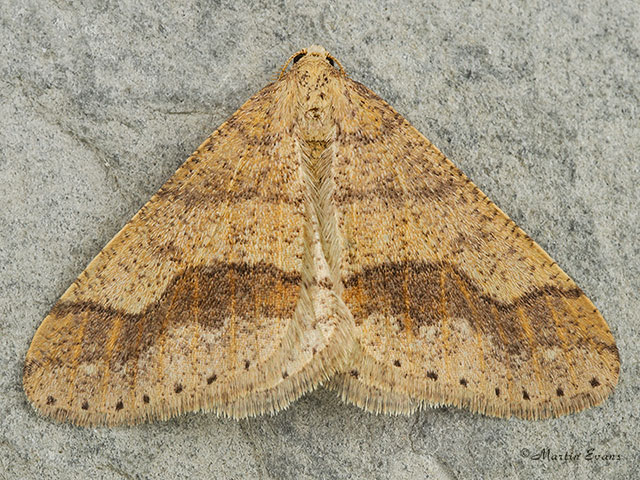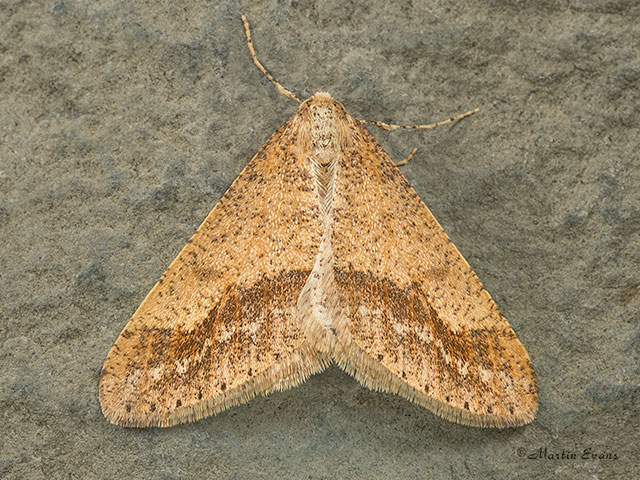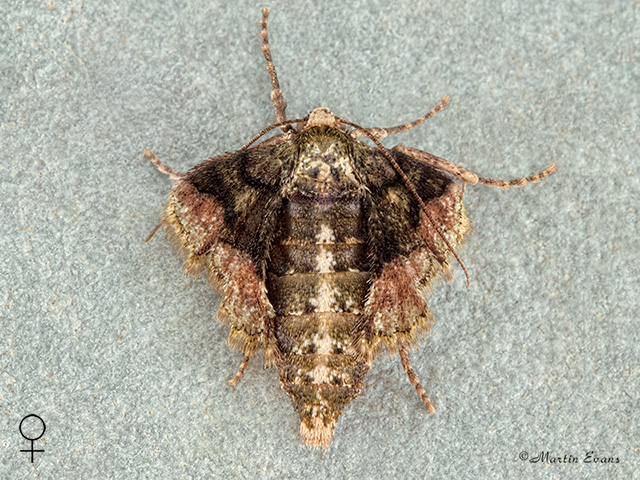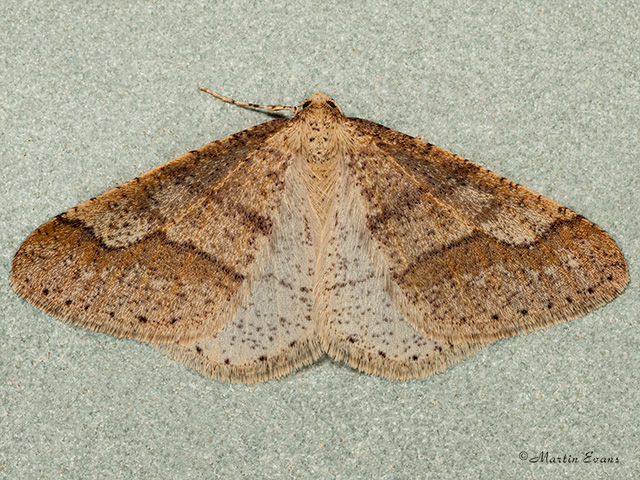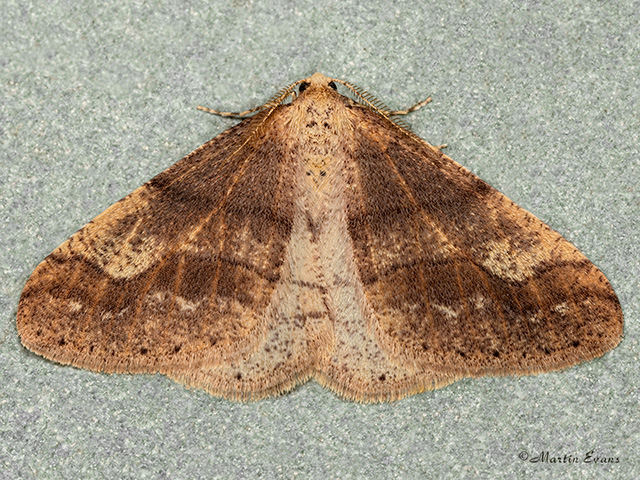Geometridae
70.255 Dotted Border Agriopis marginaria (Fabricius, [1777])
Common
Similar species: This moth has an almost straight inner cross line and an outer cross-line that is indented once then runs only slightly outwards to the trailing edge. The flightless female has quite large wings with two dark bars across them and a pale outer area that makes identification easier. Mottled Umber Erannis defoliaria has an indented inner cross-line and an outer cross-line that is deeply indented once with another slight indentation before running outward to the trailing edge. Spring Usher Agriopis leucophaearia has a semi-circular inner cross-line and an outer cross-line that is deeply indented twice then runs outward to the trailing edge. Please note that some specimens have a dark, thickened cross-line at the leading edge that makes the shape hard to determine. The female is long scaled (but not hairy) with no noticeable wings and two large dots on the first two abdominal segments. Scarce Umber Agriopis aurantiaria is superficially similar, but lacks the very prominent black dots around the outer edge of the wing, flies at the end of the year and is finished by the time Dotted Border is on the wing. The female has smaller dark wings, but also with two cross-lines.
Forewing: 16 to 20mm
Habitats: Deciduous woodland and scrub, hedgerows, gardens, calcareous scrub grassland, heathland and moorland.
Habits: The male comes to light. The female can be found by searching tree trunks about an hour after sunset and again in the early morning.
Foodplant: The larva feeds on Sessile Oak, Pedunculate Oak, Hawthorn, Midland Hawthorn, Blackthorn, plums, apples, Field Maple, Sycamore, Hazel, Downy Birch, Silver Birch, Goat Willow, Grey Willow, Dog-rose, Heather and other deciduous trees. It pupates in the soil.
On the European mainland it has also been recorded feeding on Beech and Aspen.
